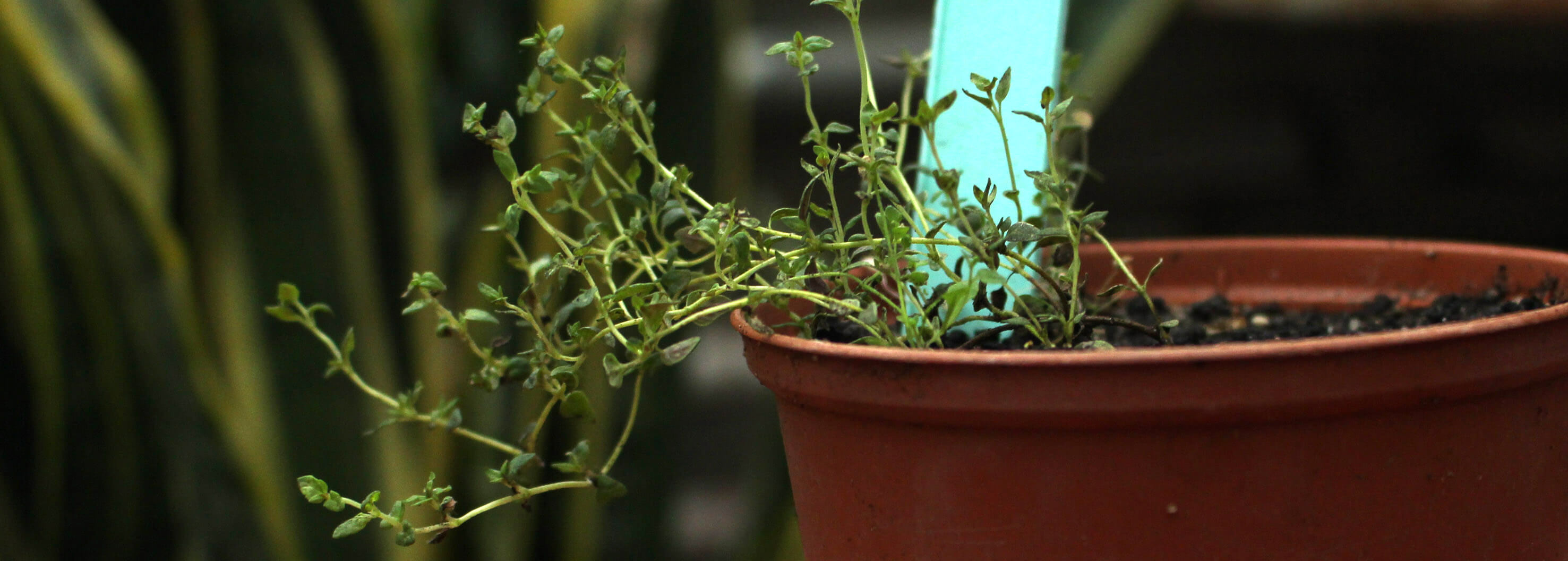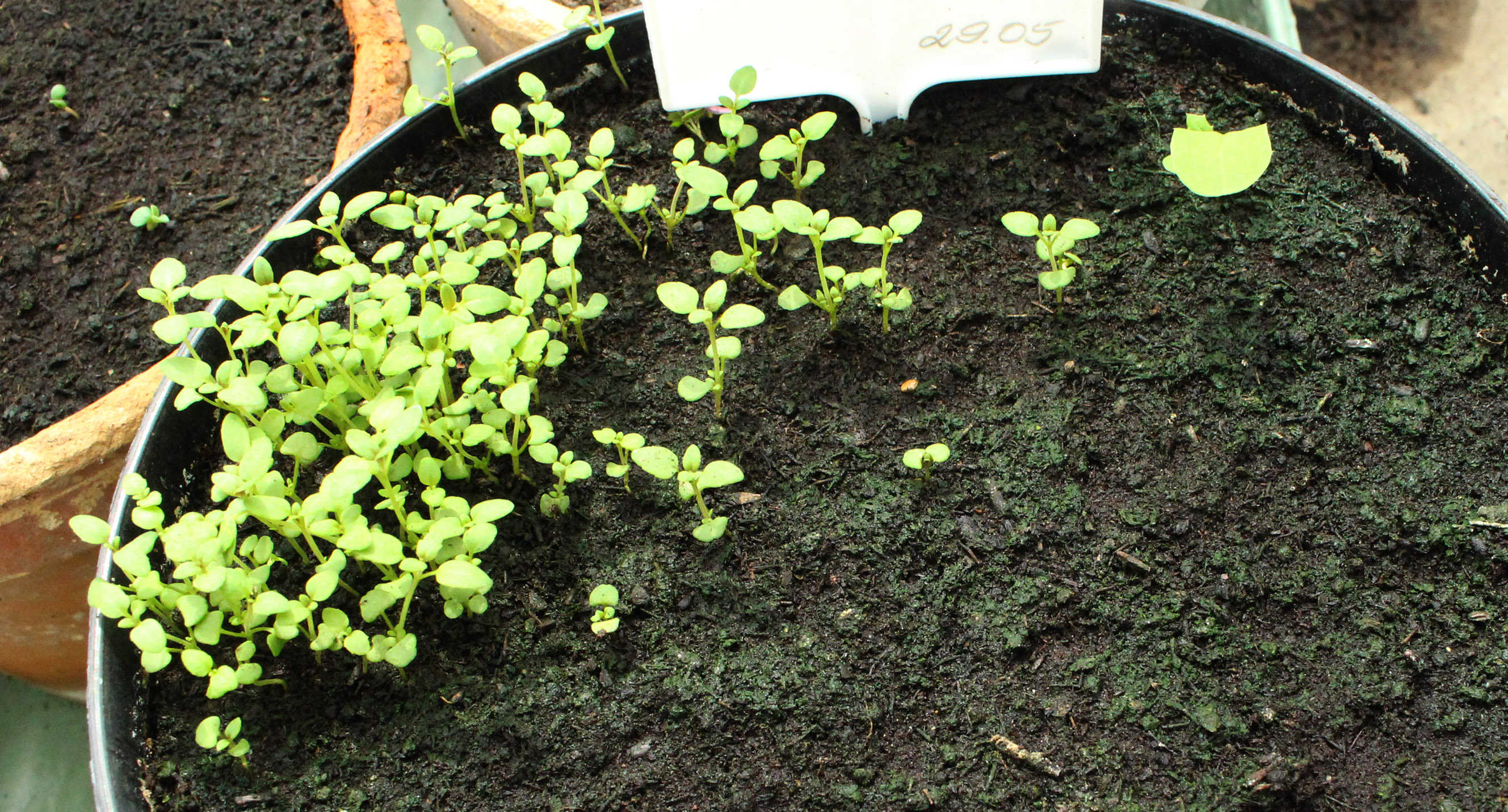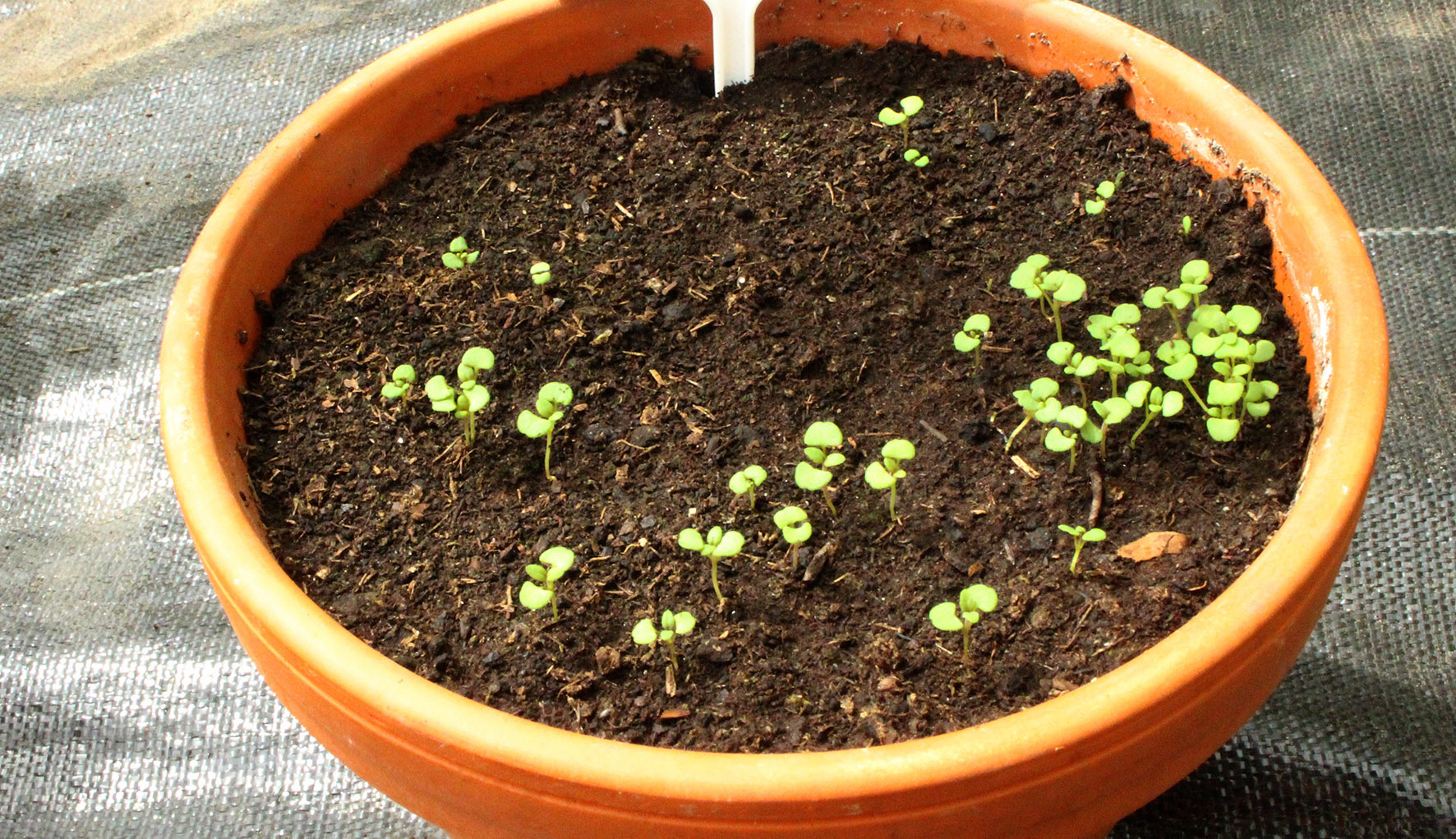
Thymus vulgaris (common thyme)
Common thyme is a perennial evergreen originating in southern Europe and northern Africa. The plant is low-growing, normally up to 30 cm. Common thyme prefers dry-, sandy- or rocky soil and thrives in full sun. It requires good drainage and is rather tolerant to frost and drought. The leaves are aromatic, and the flowers are rich in nectar attracting honeybees. The plant is grown primarily as an aromatic and culinary herb, but it is also used as a medicinal plant, especially for its antiseptic- and antioxidant properties. Common thyme has been used to treat respiratory diseases such as dry coughs, whooping cough, bronchitis and, asthma, but also diarrhea. Medicinal use is not suitable for pregnant women and all essential oils are very concentrated and may be harmful in large doses.
Cultivation
Propagated by seeds, cuttings or by division. Start cultivation in April/May in a broadcast tray under light conditions, approximately 20 °C. Initially sow the seeds in tray substrate. Common thyme needs light to germinate, sow on the surface or let the seeds be barely covered. Germination may be uneven. When large enough to handle transplant the plants into small individual pots in pot substrate. The pots can be placed in an unheated greenhouse, or outside when the risk of frost is over. When fully rooted in the pots, plant outside in field. If the plants are still small, let them grow in a greenhouse the first winter.
Family: Lamiaceae
Swedish: kryddtimjan
Finnish: tarha-ajuruoho
Norwegian: hagetimian
Danish: timian
Icelandic: garðablóðberg

Common thyme needs light to germinate, sow on the surface or let the seeds be barely covered.
Divide plants in spring or autumn. A layer of gravel on top of the soil can prevent wet soils, especially during winter. Plants may start flowering the first year, but seed harvest will not be obtained until the second year. Always harvest in dry conditions. The seeds are ripe when they start to fall out of the inflorescence. Cut the inflorescence with scissors or shake the plant, and let the mature seeds fall into a bag.
